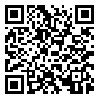BibTeX | RIS | EndNote | Medlars | ProCite | Reference Manager | RefWorks
Send citation to:
URL: http://jdc.tums.ac.ir/article-1-20-en.html

 1, Soheila Hasouri
1, Soheila Hasouri 
 , Alireza Firooz
, Alireza Firooz 
 , Alireza Khatami
, Alireza Khatami 
 , Hamed Zartab
, Hamed Zartab 
 , Asal Atarod
, Asal Atarod 
 , Reza Chalangari
, Reza Chalangari 
 , Katalin Martits Chalangari
, Katalin Martits Chalangari 
 , Faribroz Sadeghi
, Faribroz Sadeghi 

Background and Aim: Atopic dermatitis (AD) is a chronic, relapsing, pruritic skin disease more common in infancy and childhood. Emollients, topical corticosteroids, and avoidance of irritating factors are the mainstay of its treatment, but fear of side effects has limited the use of topical corticosteroids. The objective of this study was to evaluate the safety and efficacy of topical tacrolimus 0.03% ointment in the treatment of AD.
Methods: In this randomized, double-blind, clinical trial, 76 patients with AD older than 2 years were randomly allocated in two groups and treated with either tacrolimus 0.03% ointment (Abu-Rayhan Co., Iran) or placebo, twice a day for 6 weeks. Responses to treatment were compared every 2 weeks using SCORAD.
Results: Twenty-nine patients in tacrolimus group and 26 in placebo group completed the trial. The reduction in SCORAD after 2 and 4 weeks in tacrolimus group was significantly higher than placebo group (P<0/05). The frequency of treatment-induced pruritus and burning sensation was similar in both groups but erythema was more observed in the placebo group (P<0/05).
Conclusion: Tacrolimus 0.03% ointment is more effective than placebo in the treatment of AD.
Received: 2011/10/22 | Accepted: 2011/11/28 | Published: 2013/07/16
| Rights and permissions | |
 |
This work is licensed under a Creative Commons Attribution-NonCommercial 4.0 International License. |



